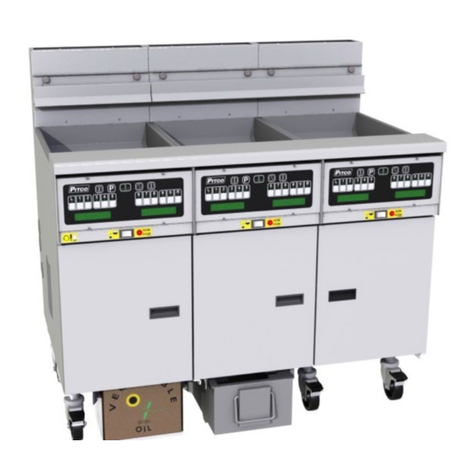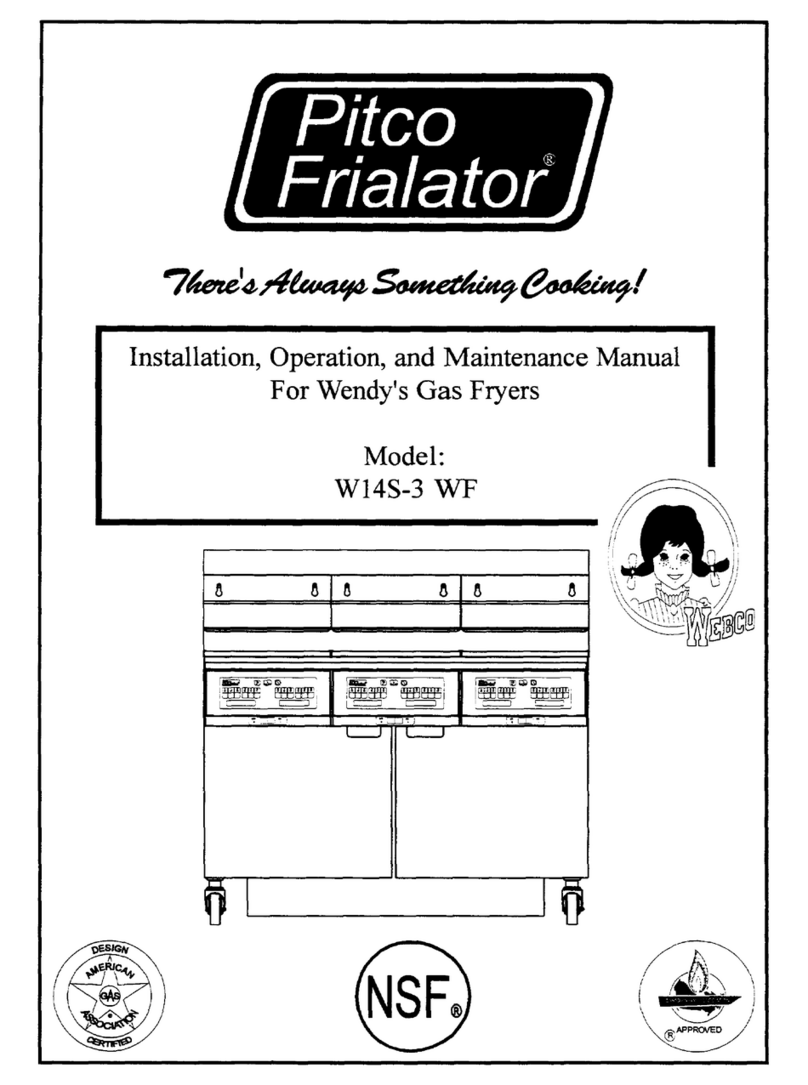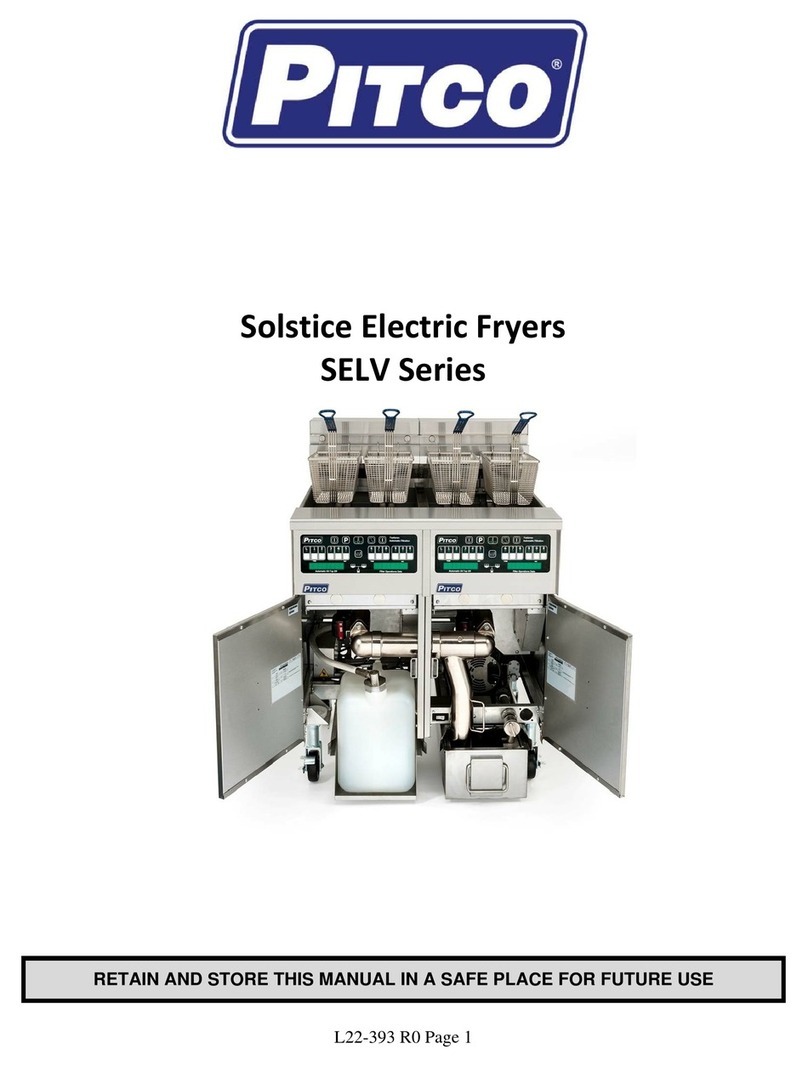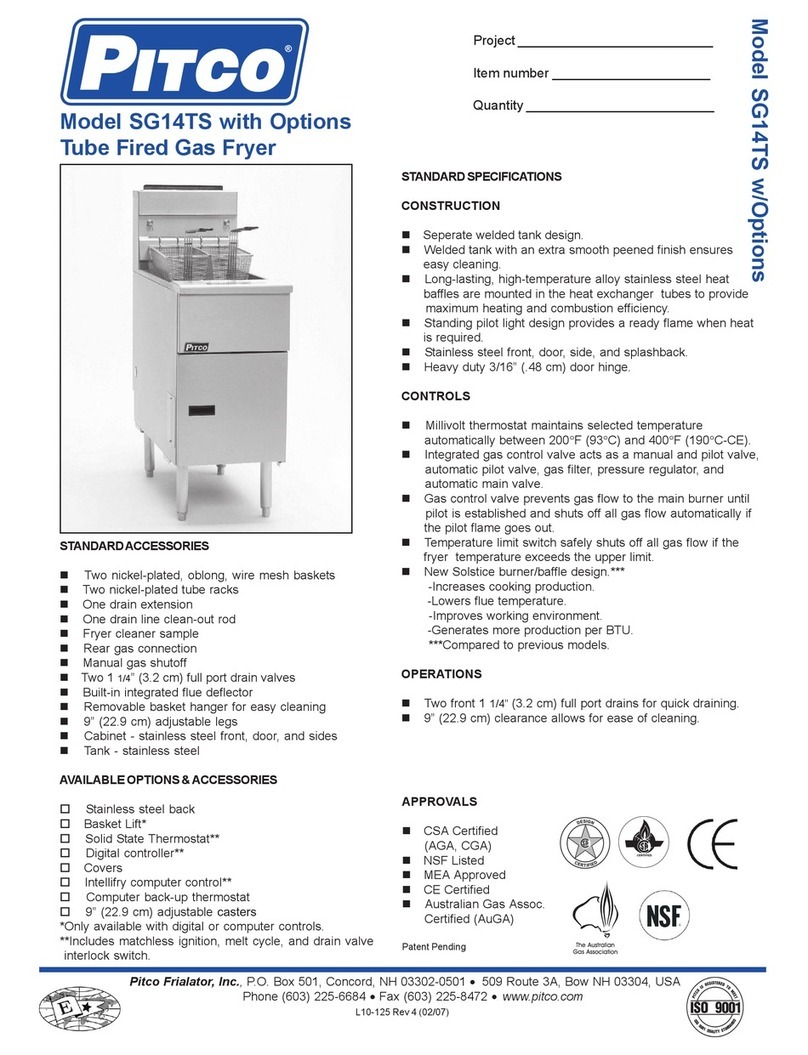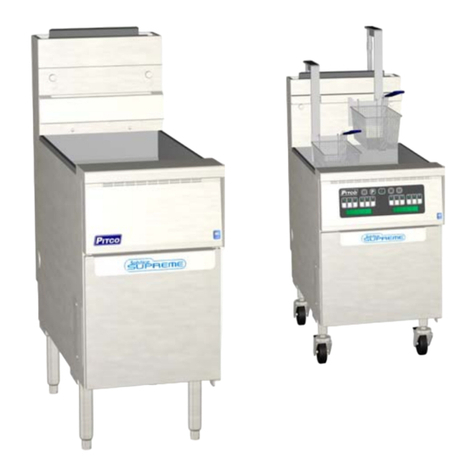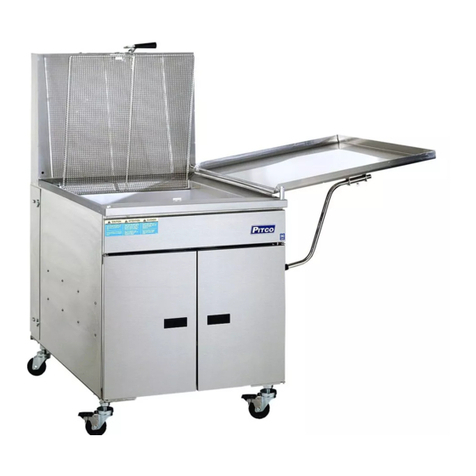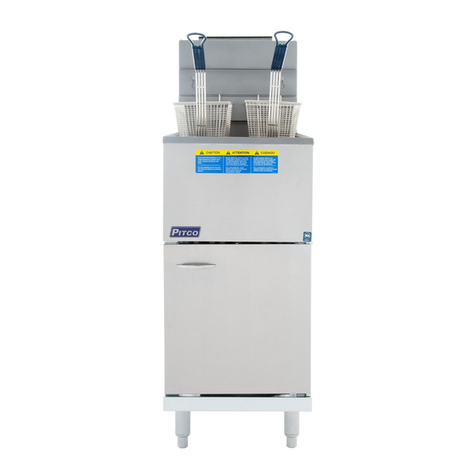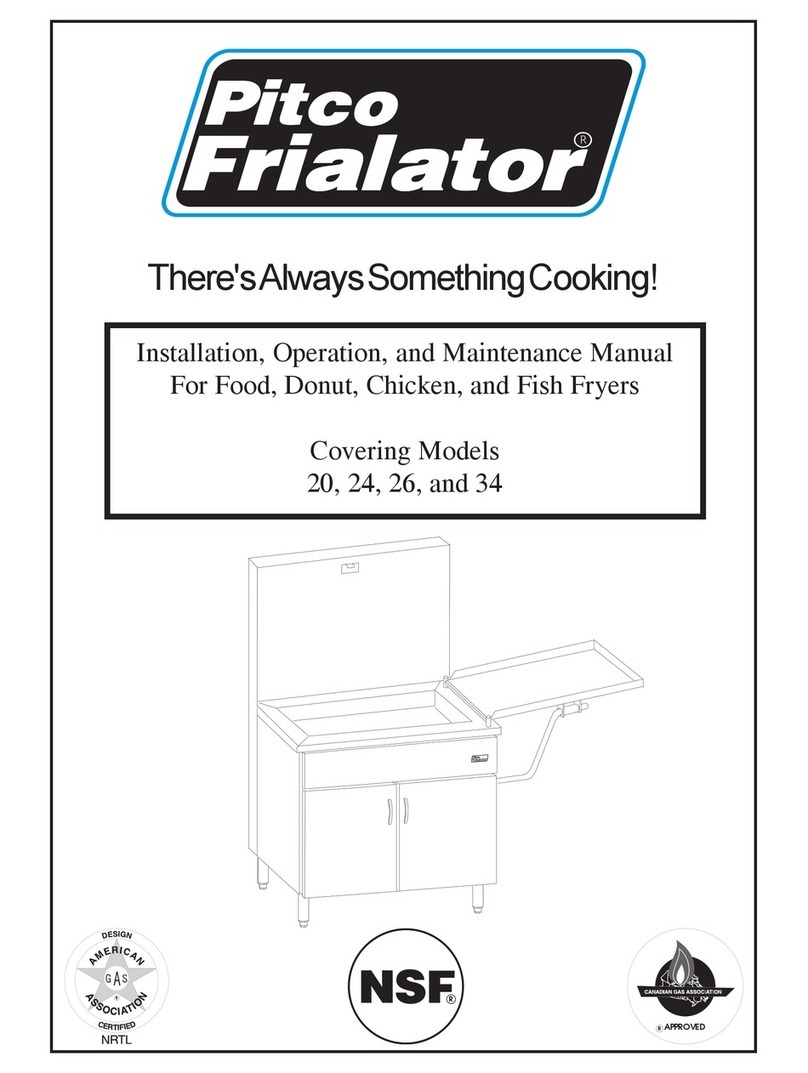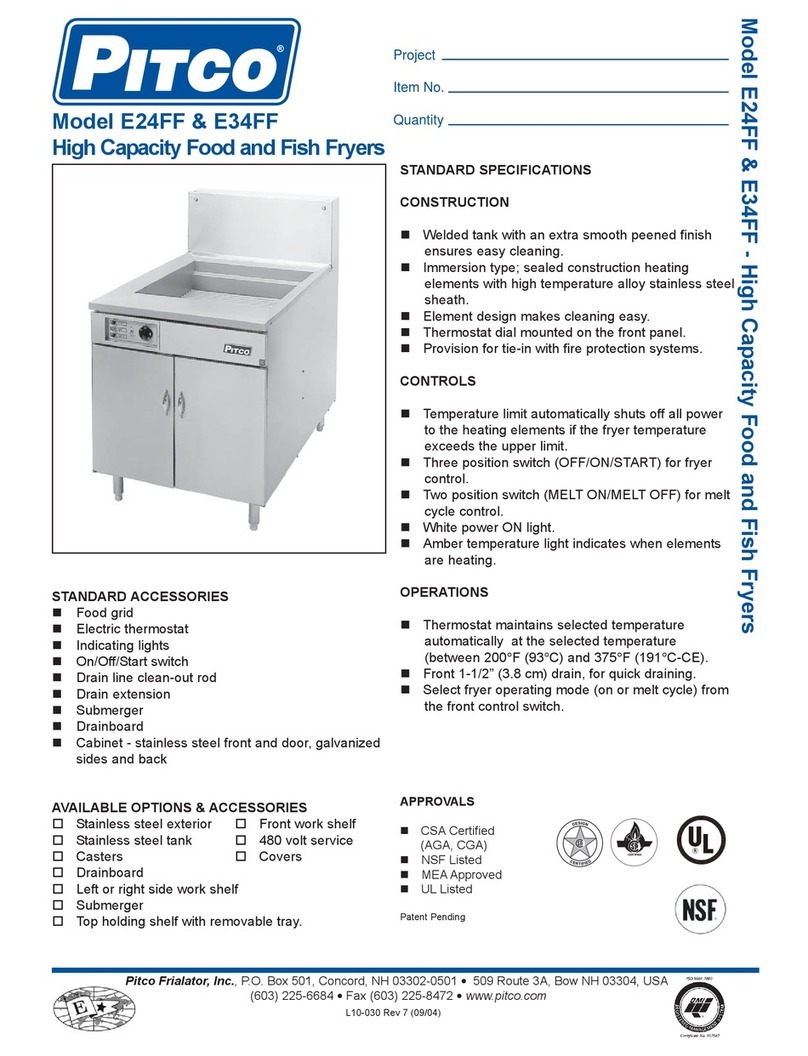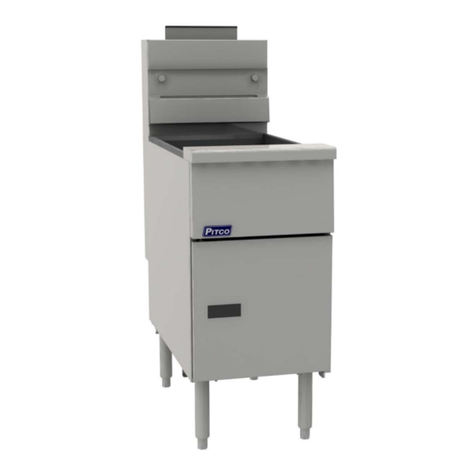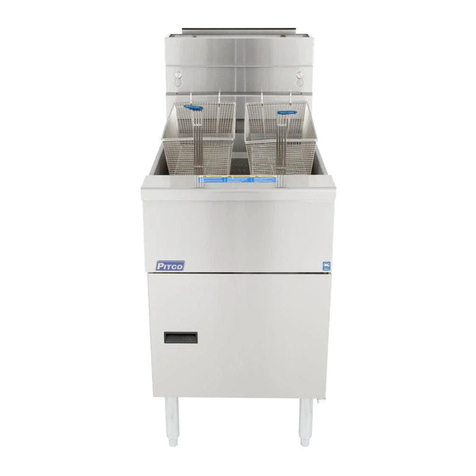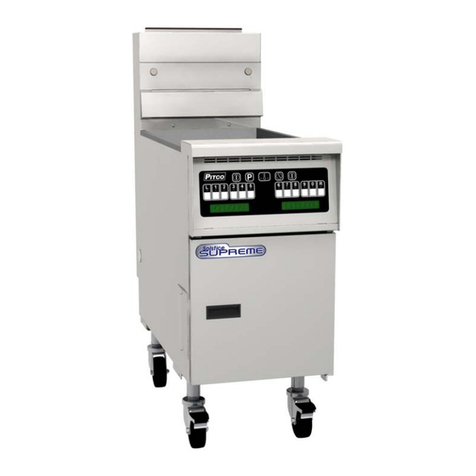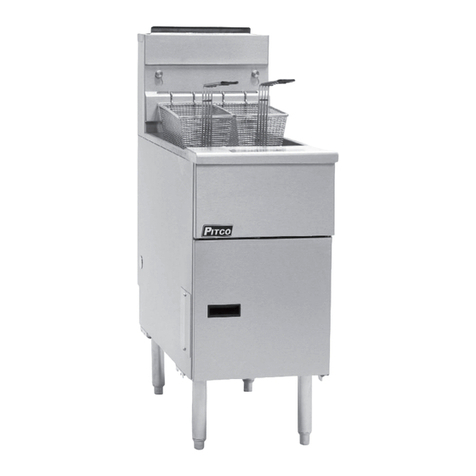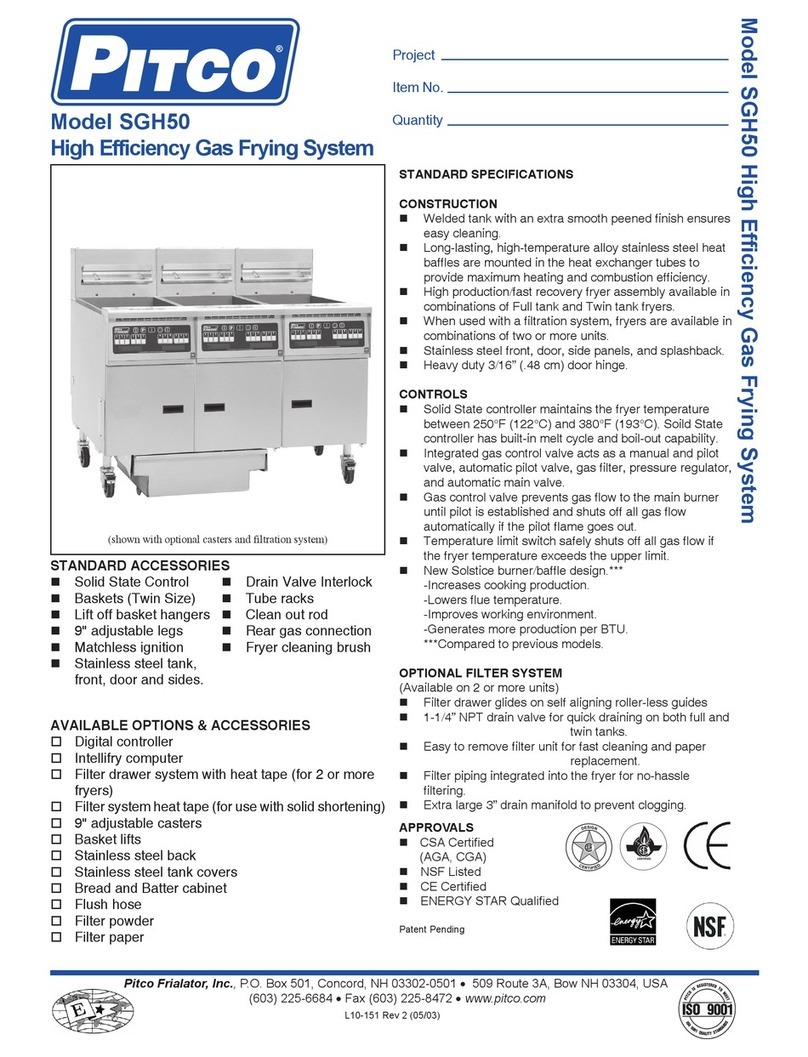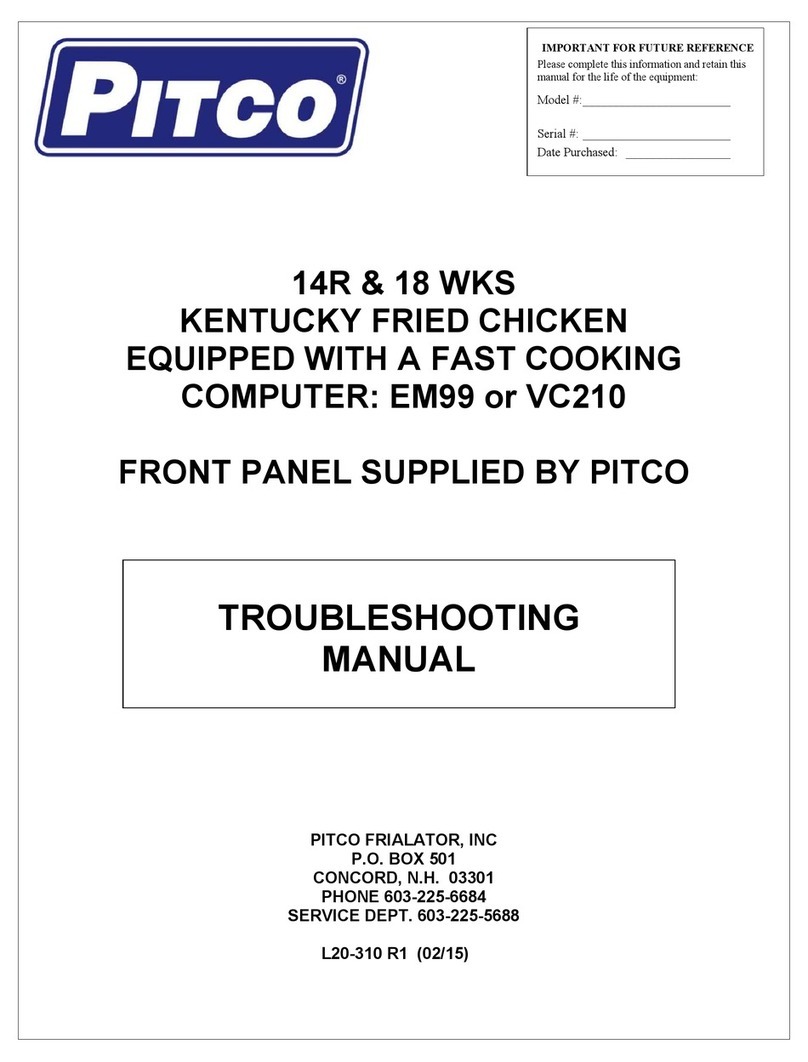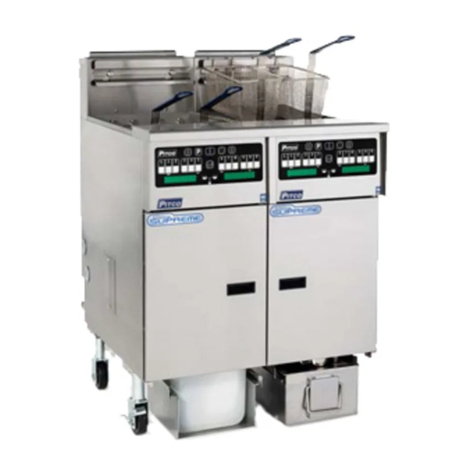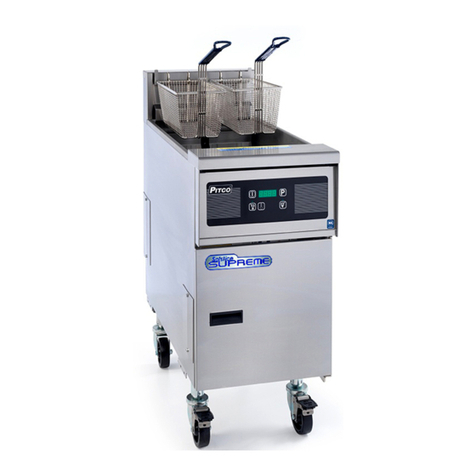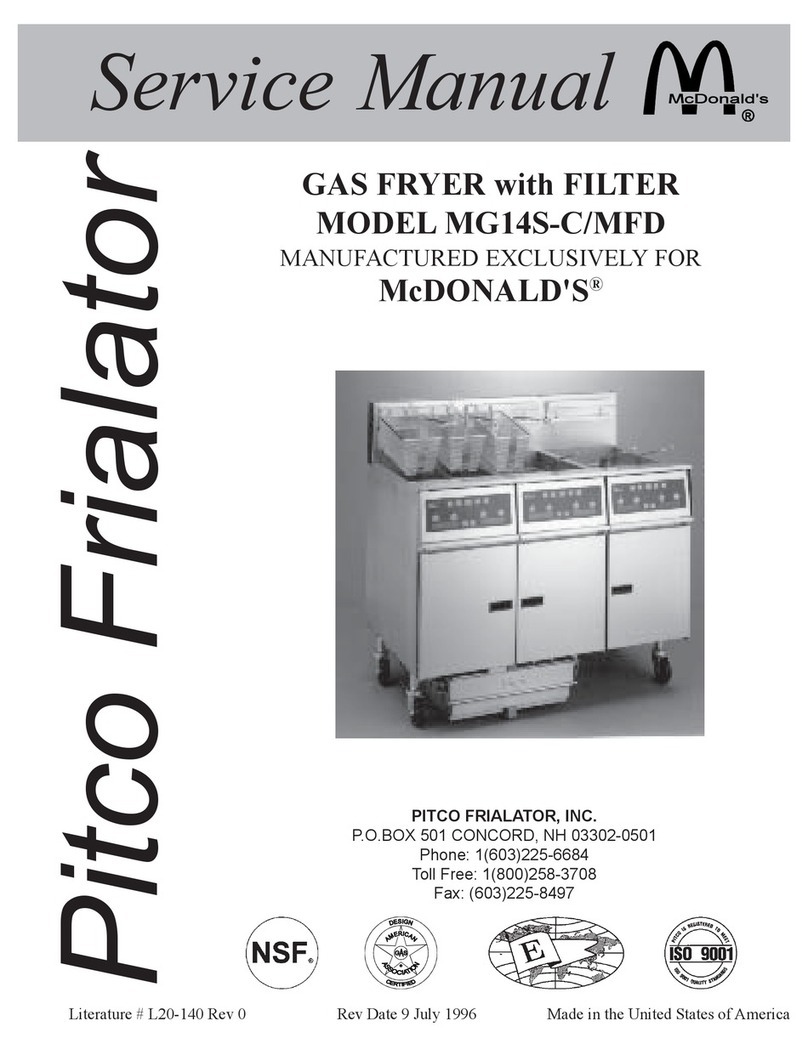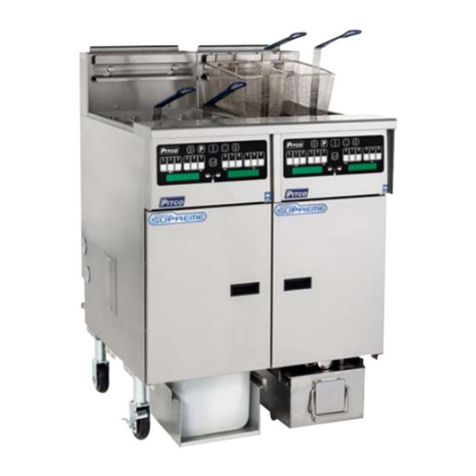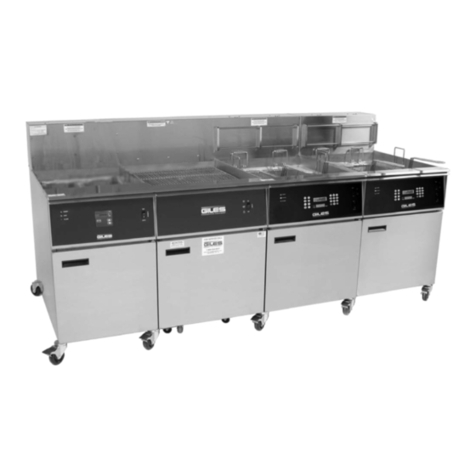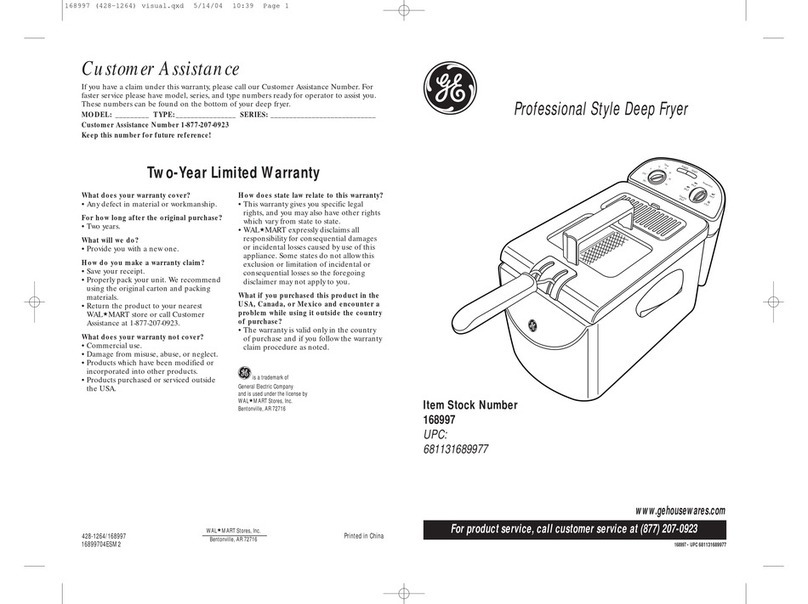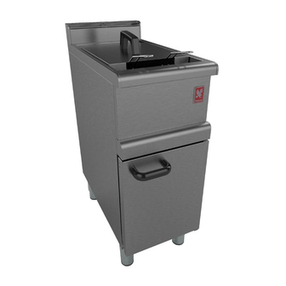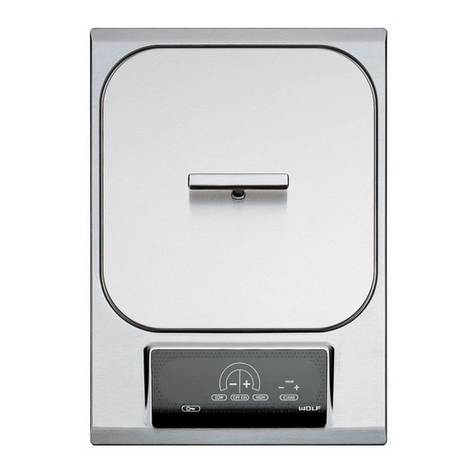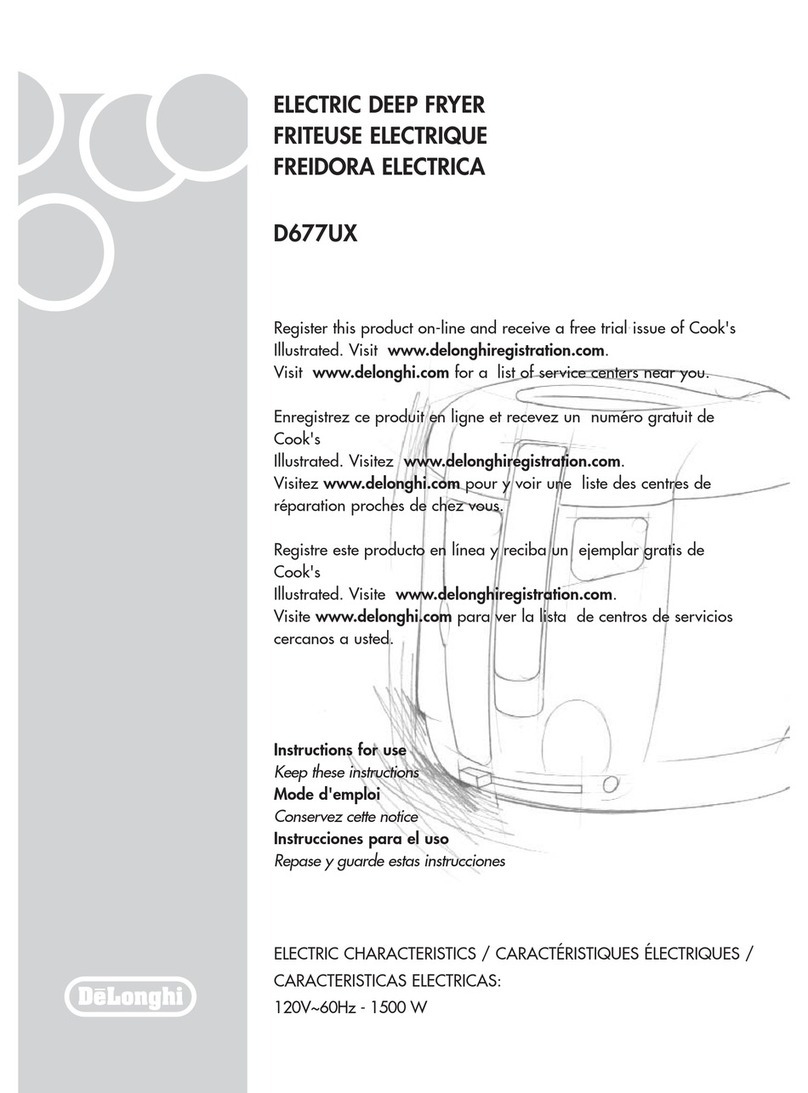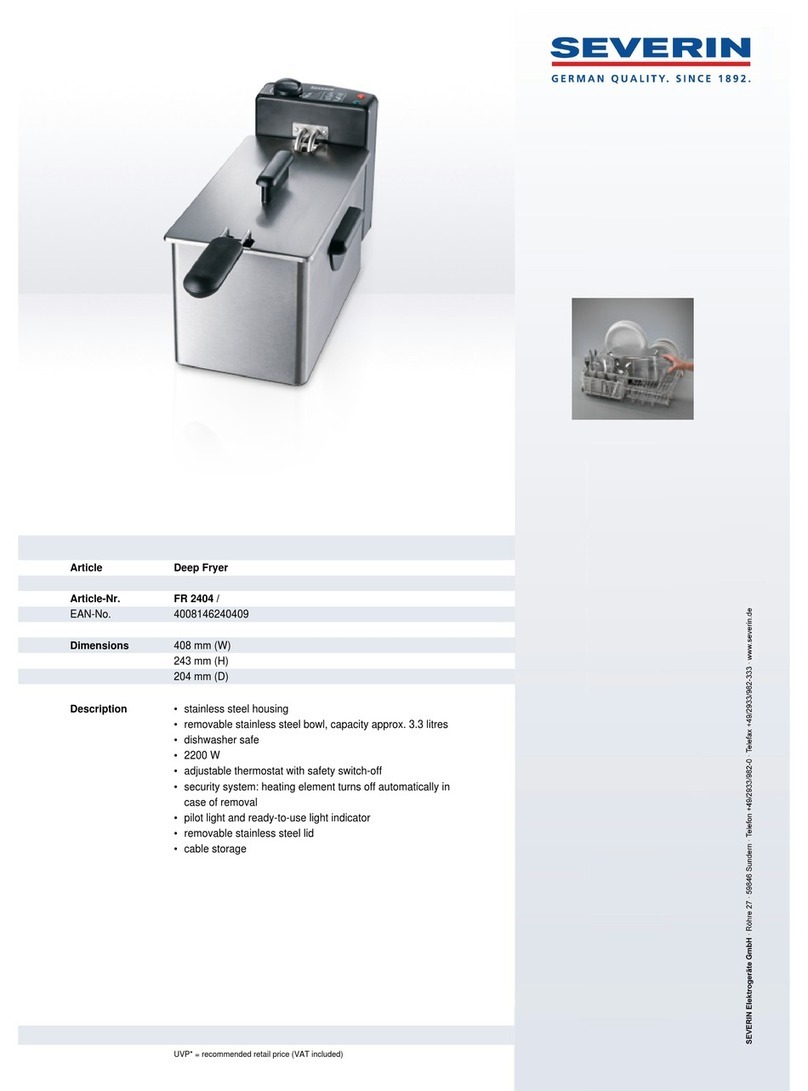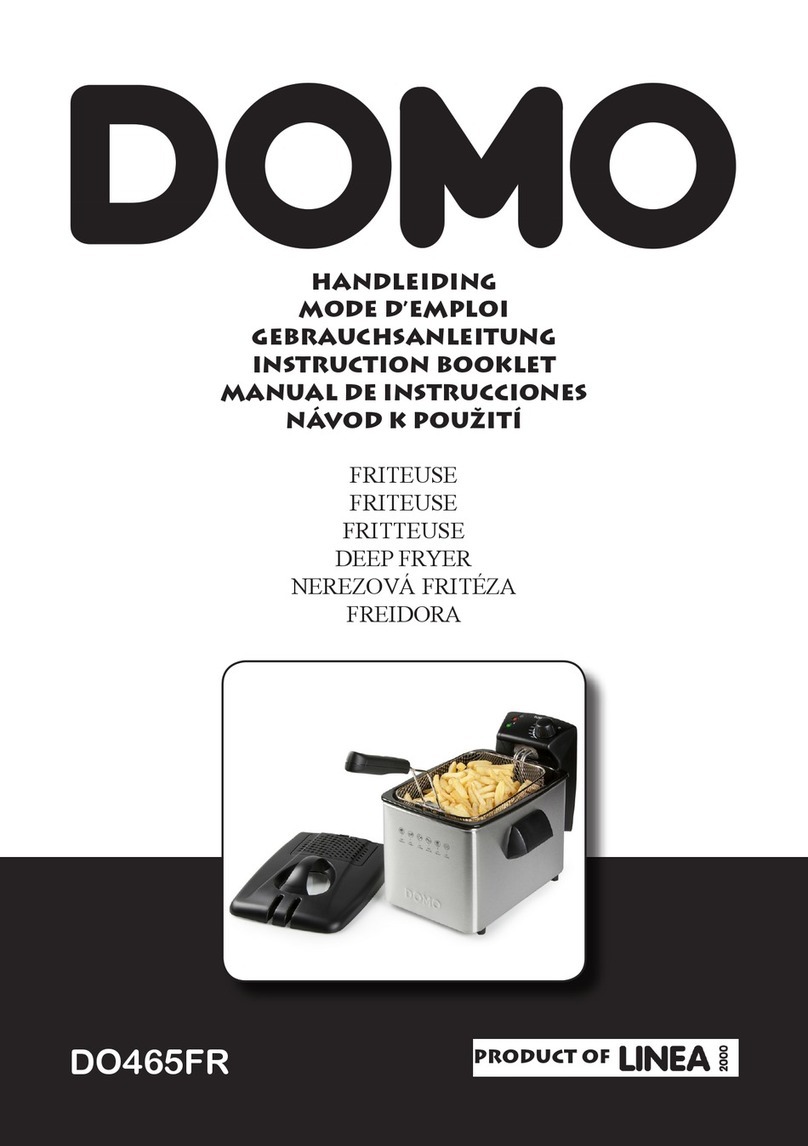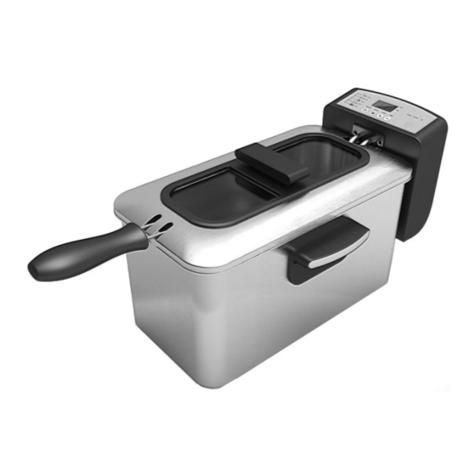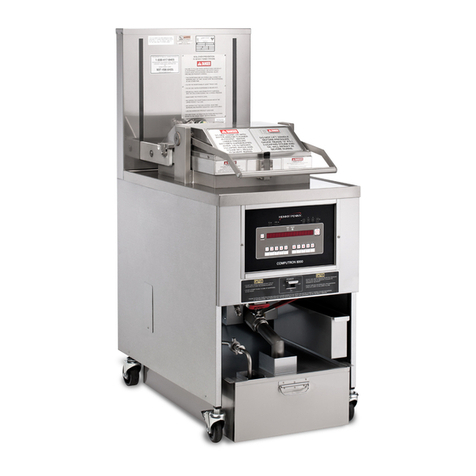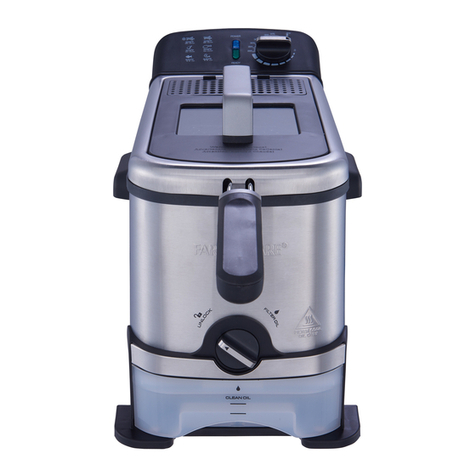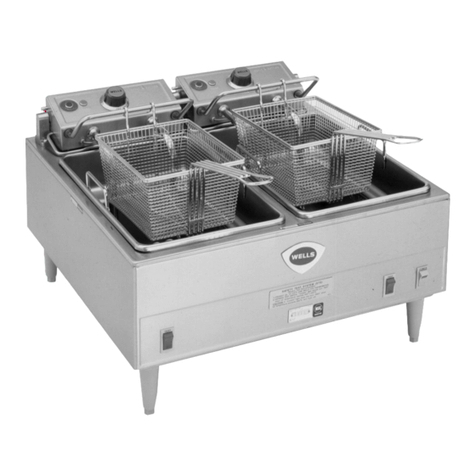
4
L20-195 rev4(07/02)
WARNING
Gasunits installedwithcastersmusthave arestraining device. Thisdevice mustbeconnectedatall timesthat the
fryerisconnected tothegassupply. If itis disconnectedforany reason,it mustbe reconnected.
ThermostatCalibrationCheck
NOTICE
Thermostat calibration requires that the temperature of the fryer be raised above boiling.
Therefore,youwillneedtodrainthewaterfromthefryerandfillitwithoil. Beforeremoving
thewater,performthe initialcleaningofthefryer. Cleaningthe fryernowwillpreventyou
from having to drain the oil and refill with water later.
To perform the calibration check detailed below you will need a digital thermometer.
a. Place the tip of the thermometer in the shortening approximately 1" above the temperature sensors.
b. Setthethermostatat325°Fandwaitforthetemperaturereadingonthethermometertorise. Asthetemperature
rises toward 325°F watch the thermometer closely.
c. Iftheshorteningtemperature reaches 350°Fand the burnersDO NOTturn off, turnthe thermostatdown. Keep
lowering the thermostat setting until the burners go out.
CAUTION
Iftheburnersdonotturnoffatthelowestthermostat setting,thethermostatcouldbe
defective. Contact your representative immediately.
d. Letthefryercycle4to6timesbeforecheckingthetemperature. Comparethethermometertemperatureagainst
the thermostat setting. If the values are more than 5°F apart, calibrate the thermostat using the appropriate
calibration procedure in this manual.
THERMOSTATCALIBRATION
Millivoltthermostats
a. Set the thermostat dial to 325o F.
b. Remove the thermostat dial by pulling the knob straight out. DO NOT rotate the dial.
c. Hold the outside of the shaft so it does not move. Use the tip of a small, flat tip screw driver to scrape away
the sealing compound from the adjustment screw.
d. Turn the adjustment screw clockwise to lower the temperature setting and counterclockwise to raise the
temperature. One quarter turn changes the temperature approximately 25oF.
e. Turn the adjustment until the burners turn on at 325oF. Replace the knob and allow the fryer to cycle 4 to 6
times. Check the temperature of the thermometer against the thermostat dial. If it is greater than 5oF differ
ence, repeat the calibration procedure.
f. When the calibration is correct, remove the thermometer and replace the tube screen.
Filling the fryer with liquid shortening
a. Make sure the drain valve is completely closed.
b. Fill the fryer with oil to the "Oil Level" line marked on the back of the tank.
e. Turn the fryer gas valve knob to the “ON” position. Allow the fryer to bring the water to a low boil and add
one packetofPitcofryercleaneroramild,lowsudsingdetergentandallowwatertocontinuetoboilforaminute,
making sure water does not boil over.
f.. Turn the gas valve knob to the “PILOT” position and allow fryer to soak with the hot water for 15 minutes.
g. Using the fryer cleaning brush, scrub the inside of the fryer to remove protective coating.
h. When cleaning is complete, turn the gas valve knob to the “OFF” position and drain the water into a container
suitable for hot water and dispose of it.
i. When the tank has cooled, rinse it thoroughly with cool water. Continue to rinse the tank until the cleaner has
been rinsed, thoroughly from the tank.
j. Using a clean dry cloth, wipe out all of the water. Be very thorough removing the water, because any residual
water will cause hot oil to splatter out of the fryer. Close the drain valve and remove container.
k. Nowthatthetankisclean,youarereadytofillandoperatethefryer. Referto instructionsonaddingshortening
to the fryer.

